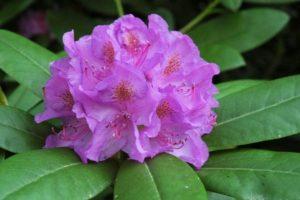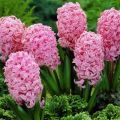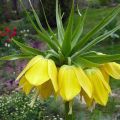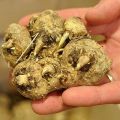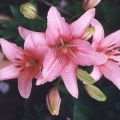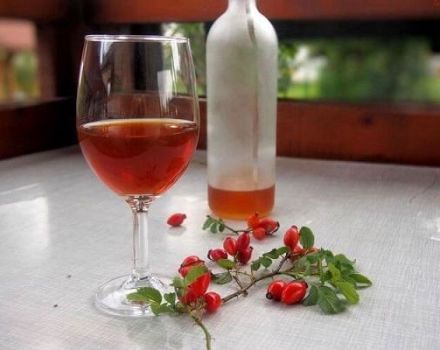How to store hyacinth bulbs at home, when to dig it up and whether it is necessary
Hyacinths are one of the earliest flowers that bloom immediately after warm weather sets in. But the plant also fades away just as quickly. Therefore, summer residents often have a question about how to keep the hyacinth bulbs healthy for planting next year.
Do you need to dig up hyacinths annually?
Like tulips, it is advisable to dig up hyacinths every year. If you do not do this after flowering, the flower may not bloom at all the next year. Therefore, digging up hyacinths must be carried out.
If you do not dig up the hyacinth bulbs, you may encounter the following problems:
- The bulbs become less resistant to frost.
- Plants get sick more often.
- The planting material degenerates and blooms worse.
- Problems arise with the propagation of bulbs.
In addition, some varieties of hyacinth reproduce very poorly. You can help them just at the time of digging. Cut the bottom of the onion crosswise with a sharp knife. The incisions are dried and removed to a room in which the bulbs will be stored until spring.
When to dig up plants?
In order for the hyacinth bulbs to remain healthy by the spring and germinate next year, they must be removed from the ground in a timely manner for the winter. Digging up too early will prevent the bulb from filling with nutrients from the soil. You should also not delay with this process.
Since hyacinth is an early flower, you can dig up the bulbs in mid-June. But again, it is not worth focusing only on the timing. There are other signs that it is time to retrieve the plant.
Dig up the hyacinth after the inflorescences have faded and the upper third of the foliage has turned yellow. It is undesirable to wait until the bush is completely dry. Digging can cause the stem to break and make the bulb harder to reach. Also, if the husk is badly cracked, then at the time of digging the children may accidentally come off and remain in the soil.
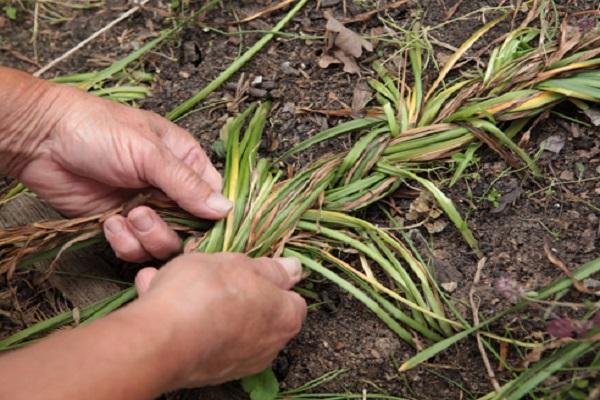
Rules for extracting bulbs from the ground
With the correct digging of the bulbs from the soil, the flowers will delight with their unusual flowering for many years. You can keep the hyacinth bulbs blooming for up to 10 years if you dig them up correctly.
A few days before the expected date of digging, the plants stop watering and feeding. The excavated planting material is cleaned of soil residues and washed in warm water. Then lay out on the newspaper to dry.
When the bulbs dry up, they are sorted out. It is important that healthy and damaged bulbs are not kept together in the box.If there are traces of damage on them, then such planting material is thrown away. Excess scales are carefully separated (especially if there are children on the bulb) and thrown away.

After all the procedures for preparing hyacinths for winter, you need to choose a container in which they will be stored. It often depends on how successfully hyacinths overwinter.
Storage of bulbs at home
The most difficult thing when growing hyacinths is to keep the planting material healthy after digging. For this, it is necessary to provide favorable conditions. The rest period is 3-4 months. During this time, it is necessary to prevent the appearance of mold and decay of the planting material.
Storage of bulbs consists of three sequential stages:
- The dug out hyacinths, along with the foliage, are laid out in a dark, cool room and kept there until the foliage is completely yellow. During this time, the leaves will give all the nutrients to the bulbs.
- Then the foliage is cut off, and the planting material is laid out in plastic or wooden boxes in one layer.
- The first 8-9 weeks hyacinths are stored at temperatures from +20 to +23 degrees. The seeds are covered with sphagnum, which retains moisture and prevents the surface of the bulbs from drying out.
- Then the temperature is reduced to +18 degrees and the boxes are kept in such conditions for about 4 weeks. During this period, you need to keep a high level of humidity, so sphagnum is constantly sprayed from a spray bottle.
- In the last week before planting hyacinths, the temperature in the room where the pots are located is lowered to +10 degrees.
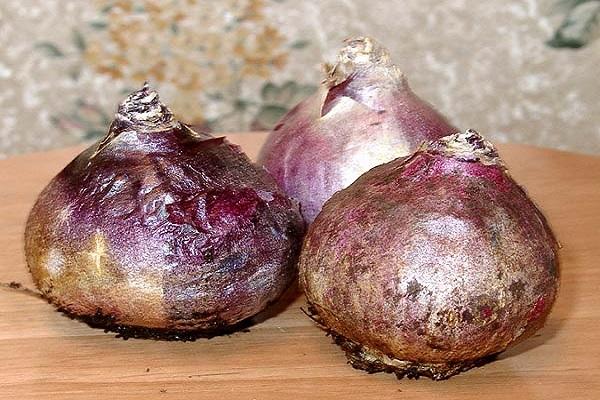
It is undesirable to drastically reduce the temperature, this can harm the seeds. The constant decrease in temperature helps to increase the frost resistance of hyacinths, and after transplanting into the ground, it is easier for them to endure cool street weather.
Another nuance to consider when storing hyacinths in winter is the appearance of mold. Extremely high humidity and improper storage conditions can mold the seeds and infect healthy specimens. To prevent this from happening, you need to constantly look through the boxes, and if damaged specimens appear, throw them out immediately, and process healthy ones with potassium permanganate.
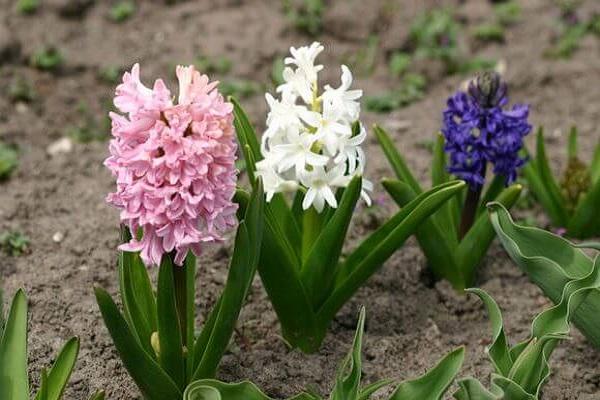
Dates for planting the bulbs back to the garden
By the end of winter, you need to start preparing for planting flowers in open ground. The timing depends on the region of residence; in different climatic zones, a cold snap occurs at different times. Hyacinths are planted in late September - early October, when the soil has not yet had time to freeze and the weather is relatively warm outside. In warm growing regions, the dates for planting hyacinths back into the beds are shifted by several weeks.
Soil preparation
Before planting in open ground, the soil is first prepared. The soil for the flowers must be well-drained and fertile. Heavy and acidic substrates are not suitable for this crop.
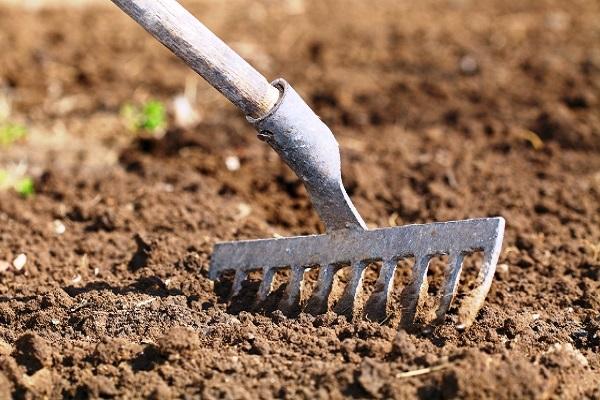
It is not recommended to apply fresh manure before planting. Not only will such fertilizer lose most of the nutrients during application, but due to its concentration, it can destroy the seeds.
They begin to prepare the site for planting in August-September. The soil is dug up, weeds are removed. The soil must be dug to a depth of 30-40 cm. Then potassium-phosphorus fertilizers are applied to the soil.
It is not recommended to apply nitrogen-containing fertilizers before the autumn planting. Nitrogen stimulates growth, and this is undesirable to allow in the fall, when the plants need to prepare for wintering.

Seating scheme on the site
You can plant planting material in any order, the main thing is to leave a distance between the bulbs at least 15-20 cm.
Hyacinth planting process:
- Dig a hole in the ground 10 cm deep.
- Pour humus at the bottom of the hole.
- Place the onion in the hole and dig in with soil.
- The top should be completely covered with earth.
- Sprinkle with plenty of warm water.
Seeds are planted deeper into loose soil than into heavy soil. Water the newly planted hyacinths abundantly, but do not flood them. Subsequent watering is carried out as needed.
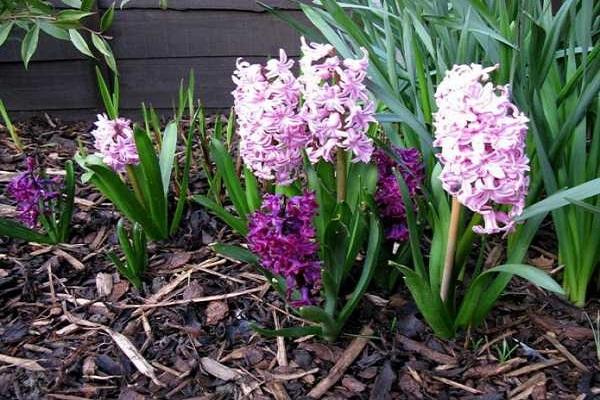
In regions with high humidity, the planting process takes place a little differently:
- Dig a hole 20 cm deep.
- Pour humus on the bottom.
- Then fill in a layer of river sand (3-5 cm).
- Put the onion out and add another layer of sand.
- Cover the hole with earth.
This method of planting will help protect the bulbs from decay and the development of infections.
After planting, the bed with hyacinths must be mulched. First of all, this measure will protect flowers from winter frosts. In addition, the soil will always be moistened, and in spring weeds will not appear on the garden bed.

When hyacinths are planted indoors
At home, forcing hyacinths is carried out in mid-September. Only large bulbs are suitable for this. Before disembarkation, they are stored in a dark room at a temperature of +17 degrees.
During forcing, the planting material is not buried; a third of the bulb must be on the surface. For forcing the plants, they use a light fertile soil based on peat and river sand. You can also add one piece of leaf land. Drainage is laid out at the bottom of the container.
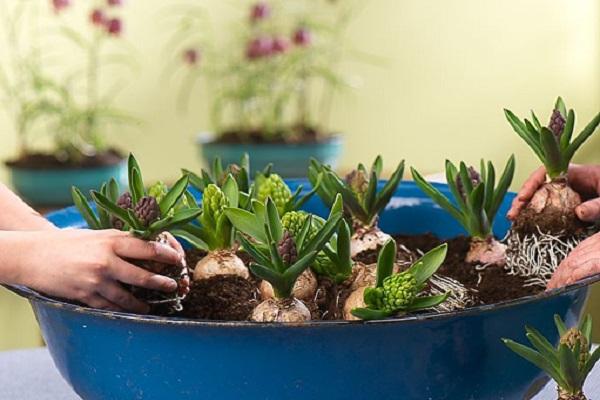
Then the containers are placed in a cool room at a temperature of + 6 ... + 7 degrees. If you plan to get inflorescences by spring, the temperature is reduced to +5 degrees.
In such conditions, the plants are left for 10-14 weeks. After which they will sprout. The main thing is that all this time they do not get sunlight. Watering the soil is also optional.
The second stage is the transfer of containers to a warm room with a temperature of + 15 ... + 21 degrees. Moisten the soil regularly, do not allow it to dry out. After a few weeks, place the containers in direct sunlight. It is necessary to put hyacinths in a warm room in the sun after they have a green arrow with an inflorescence.
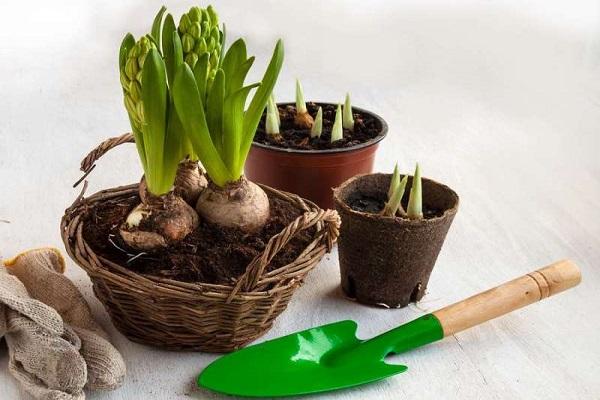
When can you leave the bulbs in the ground
It is not always necessary to dig up hyacinth bulbs annually, and plant them back into the ground by winter. Although it is better to do it regularly. It is not necessary to dig up a flower every year if the region of growth is warm in winter. But even in this case, the excavation will have to be carried out at least in a year. If you do not do this annually, you will still have to dig up the plants and plant the children so that the beds do not overgrow, and the bushes have enough space.
It is also not necessary to do this if the bulbs are still very small and have not even bloomed yet. In the first year after planting, they can be left in the ground for the winter. And next year, dig it up with the rest of the seeds.
